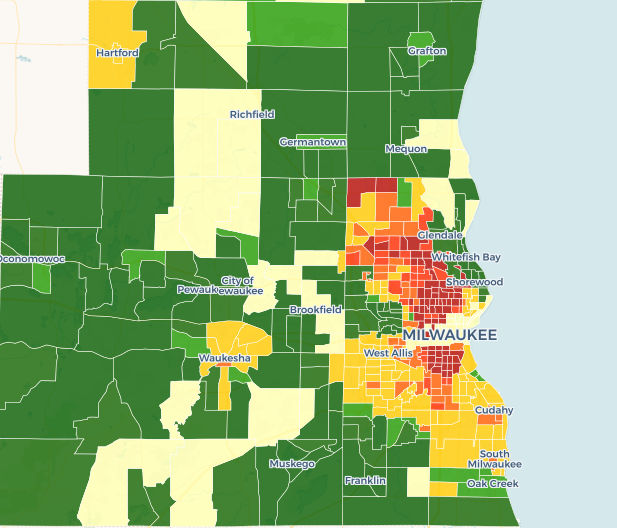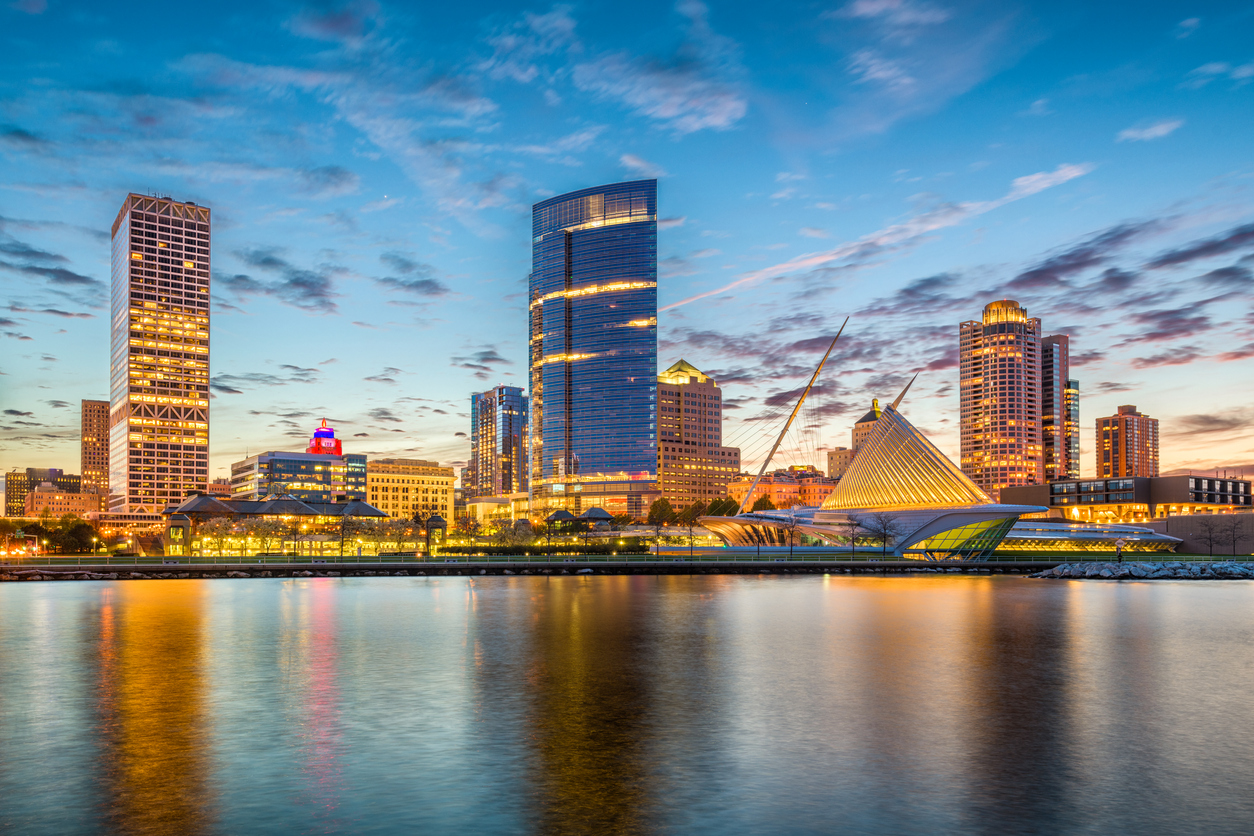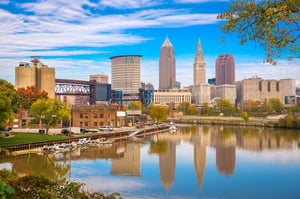The real estate market in Milwaukee has been described as an unstoppable force, similar to the championship Green Bay Packers. Demand for affordable homes in Milwaukee is perpetually hot, and lack of inventory is driving prices up.
As the Milwaukee Business Journal reports, investors purchased $137.8 million worth of homes in Milwaukee the first quarter of this year. Aggressive offers are the norm, due to record-low inventory and an influx of buyers. Through May 2022, average home values in metropolitan Milwaukee were $182,681, an increase of over 14% compared to the same time last year.
Demand for rental property in Milwaukee is robust as well, with the city ranking among the top 10 for adaptive reuse conversions of older commercial buildings into residential rental units. However, many Milwaukee residents are still struggling to find a place to rent. Waiting lists to rent are not uncommon, and a home that is turn-key is going to rent right away.
Located along the western shore of Lake Michigan, Milwaukee is the largest city in Wisconsin and less than a two-hour drive from Chicago. A large number of German immigrants arrived in the early 1800s, helping to put Milwaukee on the map with its beer brewing traditions and earning the nickname “Brew City.”
But there’s a lot more to Milwaukee than just beer, brats, and real estate. Read on to learn about the diverse economy and quality attracting investors to Milwaukee in 2022.
>>Explore Roofstock's Milwaukee properties here.
Population growth
Although population growth in Milwaukee is sluggish, the suburbs continue to grow. According to an article in the Milwaukee Journal Sentinel, nearby suburban cities such as Brookfield, Brown Deer, and West Allis have grown by tens of thousands since 2010, while the population of the City of Milwaukee is on the decline.
Key Population Stats:
- The City of Milwaukee has a population of just over 577,000 and there are about 1.6 million residents in the Milwaukee metropolitan area.
- Population of Milwaukee has declined by .059% year-over-year, and according to the most recent census, by 3% over the past decade.
- Median household income in Milwaukee has grown by 8.58% over the past 12 months while median property values have increased by 4.19%.
- Milwaukee is the third-most densely populated metro area in the Midwest, just behind Chicago and Detroit.
- Local real estate agents note that regardless of a minor population loss or gain, things are busier now than ever before, with increasing demand and inventory at record lows.
Job Market
Metro Milwaukee has posted 13 consecutive months of year-over-year job growth, helping to drive the unemployment rate to just 3.5%. According to the Metropolitan Milwaukee Association of Commerce (MMAC), the manufacturing sector is experiencing the strongest gains in decades with job levels higher than before the pandemic.
Key Employment Stats:
- GDP of Milwaukee is nearly $88 billion, an increase of about 3.5% over the past decade.
- Job growth in Milwaukee was 0.27% year-over-year and the unemployment rate is currently 3.5% (April 2022).
- Cost of living in Milwaukee is 3% below the national average, according to Forbes.
- Industry sectors in Milwaukee showing the biggest recent employment gains include construction, manufacturing, professional and business services, and leisure and hospitality, according to the BLS.
- Fortune 500 companies located in Milwaukee are Johnson Controls, Northwestern Mutual, the world’s third-largest staffing firm ManpowerGroup, Rockwell Automation, Harley-Davidson, and mining equipment manufacturing firm Joy Global.
- Major companies in Milwaukee and the metropolitan area include Briggs & Stratton, Alliance Federated Energy, Wisconsin Energy, residential and commercial water heater manufacturer A.O. Smith, Master Lock, and GE Healthcare Diagnostic Imaging and Clinical Systems.
- Colleges and universities in the Milwaukee area include Marquette University, Mount Mary University, University of Wisconsin - Milwaukee, and the Medical College of Wisconsin.
- Health care facilities in Milwaukee include St. Luke’s Medical Center, The Wisconsin Heart Hospital, and Ronald McDonald House.
- 36.1% of the people in Milwaukee hold a bachelor’s degree or higher.
- Nearly 92% of the people in Milwaukee are high school graduates or higher.
- Interstate highways intersecting Milwaukee include I-94 to Chicago, I-43, I-41, I-794, and I-894.
- The Port of Milwaukee is a global trade hub handling 2.3 million metric tons of cargo each year and serving southeastern Wisconsin, southeastern Minnesota, and northern Illinois.
- Freight rail providers Union Pacific Railway and Canadian Pacific Railway operate out of the Port.
- Passenger traffic at Mitchell International Airport in Milwaukee (MKE) exceeded seven million travelers prior to the pandemic, while freight cargo shipments at MKE grew by more than 3% to 84,000 tons.

Real estate market
Home sales in the Milwaukee metro area are on track for a record year, with a growing number of listings still not meeting demand. According to a report by the Milwaukee Journal Sentinel, the number of homes listed for sale at the beginning of the year was the second lowest this century.
Key Market Stats:
- Zillow Home Value Index (ZHVI) for Milwaukee is $182,681 as of May 2022.
- Home values in Milwaukee have increased by 14.3% over the last year.
- Over the past five years home values in Milwaukee have increased by 75%.
- Median list price of a home in Milwaukee is $174,900 based on the most recent report from Realtor.com (April 2022).
- Median listing price per square foot for a home in Milwaukee is $130.
- Days on market (median) is 44.
- Median sold price for a single-family home in Milwaukee is $196,000.
- Sale-to-list price ratio is 100.28%, which means that on average homes in Milwaukee are selling for the full asking price.
- Of the 172 neighborhoods in Milwaukee, Lower East Side is the most expensive with a median listing price of $265,000.
- Most affordable neighborhood in Milwaukee to buy a home is Franklin Heights where the median list price of a home is $49,900.
Strong renters’ market
The shortage of homes to rent in Milwaukee is making it difficult for some residents to find a place to live. As WTMJ-TV Milwaukee recently reported, rentals like single-family homes go pretty quickly, with some prospective tenants putting their names on waiting lists. One local property manager says the current demand for rental property in Milwaukee is unlike anything he has seen in the past 10 years.
The demand for rental property in Milwaukee is so strong that conversions of older buildings into apartments have reached an all time high. According to a recent report from WisBusiness, Milwaukee ranks among the top 10 cities nationally for repurposing buildings such as former factories and warehouses into apartments and rental units.
Key Market Stats:
- Median rent in Milwaukee for a 3-bedroom unit is $1,350 per month, according to Zumper (as of June 2022).
- Rents in Milwaukee have increased by 6% year-over-year.
- 35% of the rental units in Milwaukee rent for between $1,001 and $1,500 per month based on the most recent report by RENTCafé (February 2022).
- Renter-occupied households in Milwaukee account for 56% of the total occupied housing units in the metropolitan area.
- Most affordable neighborhoods in Milwaukee for renters are Midtown, Triangle, and North Division, where rents are $795 per month or less.
- Neighborhoods in Milwaukee most expensive for renters include Juneau Town, Northpoint, and Kilbourn Town where rents go as high as $3,100 per month.
Historic Price Changes & Housing Affordability
Every month Freddie Mac publishes its House Price Index (FMHPI) report that gives investors information on current and historic home price changes in Milwaukee. Kiplinger reviews data from ATTOM Data Solutions to track longer-term housing prices and rank the affordability of homes in Milwaukee.
The most recent FMHPI from Freddie Mac for house prices in the Milwaukee-Waukesha-West Allis, WI MSA reveals:
- April 2017 HPI: 138.7
- April 2022 HPI: 204.9
- 5-year change in house prices: 47.7%
- One-year change in house prices: 11.3%
- Monthly changed in house prices: 1.0%
Home price data from ATTOM Data Solutions was recently analyzed by Kiplinger to determine the affordability of housing in Milwaukee, Wisconsin:
- Since the peak of the last real estate cycle, home prices in Milwaukee have increased by 0.5%.
- Since the last real estate cycle market bottom, home prices in Milwaukee have grown by nearly 68.9%.
- Housing affordability in Milwaukee is ranked as 2 out of 10, meaning that the Milwaukee metro area is one of the more affordable places to own a home in the U.S.
Quality of life
When it comes to desirability, value, job market, and overall quality of life, Milwaukee receives strong scorecard rankings from U.S. News & World Report. Affordable rents, low unemployment, and a thriving nightlife and restaurant scene make the area attractive to live.
Key Quality of Life Stats:
- During the winter, ice skating and sledding are popular outdoor pastimes, while hiking and boating enthusiasts love the weather during summer and fall.
- Average commute times in Milwaukee are just 23.1 minutes.
- Nearby big cities like Chicago, Minneapolis, Indianapolis, Des Moines, Cincinnati, St. Louis, Louisville, and Detroit are each less than a seven hour drive from Milwaukee.
- The Hop light rail system offers free rides from the Milwaukee Public Market up through East Town, Yankee Hill, and the Lower East Side neighborhoods.
- Summerfest is the world’s largest music festival and takes place every year along the Milwaukee Lakefront.
- Theatre companies in Milwaukee include the Milwaukee Ballet, the Florentine Opera, and the Milwaukee Symphony Orchestra.
- Beer brewers Schlitz, Blatz, Pabst, and Miller made Milwaukee the #1 beer producing capital in the world, while today there are taverns and craft breweries in almost every neighborhood.
- Happy Days and Laverne and Shirley are two sitcoms from the 1970s and 1980s that were set in Milwaukee.
- NBA Milwaukee Bucks and the MLB Milwaukee Brewers give sports fans something to cheer about, while most NFL fans root for the Green Bay Packers in Milwaukee’s northern neighboring city.
Get out the map
Where to begin your search? Roofstock created a heat map of Milwaukee based on our Neighborhood Rating, a dynamic algorithm that enables you to make informed investment decisions by measuring school district quality, home values, employment rates, income levels and other vital investment criteria.

DARK GREEN: 4-5 star neighborhood
LIGHT GREEN: 3.5-4 star neighborhood
YELLOW: 2.5-3 star neighborhood
ORANGE: 2 star neighborhood
RED: 1 star neighborhood
Ready to invest in the Milwaukee market? If you haven't already done so, create your free Roofstock account and set up alerts. We'll notify you when we have a Milwaukee investment property that matches your search criteria.









